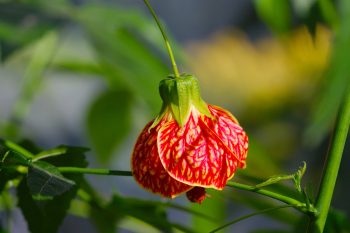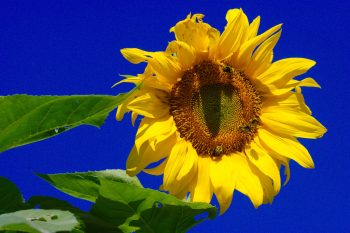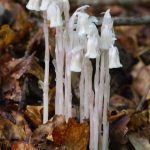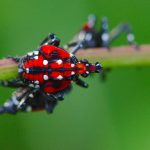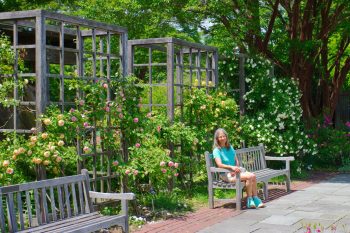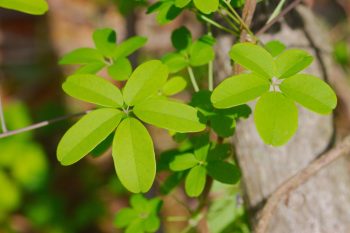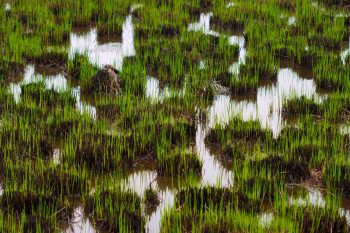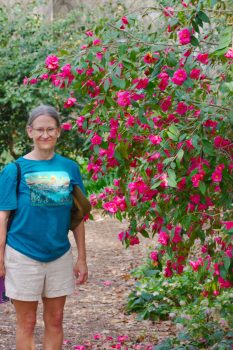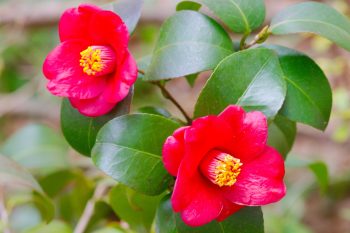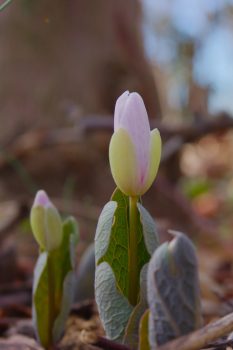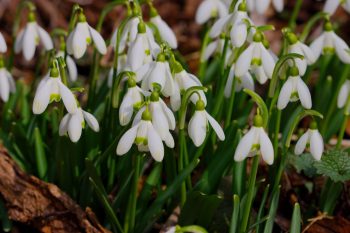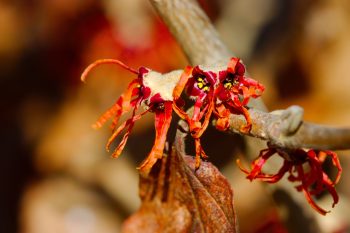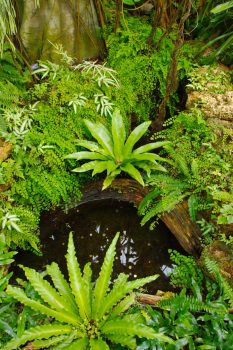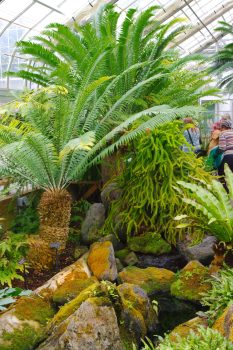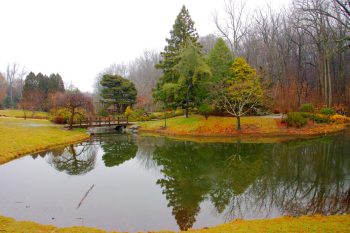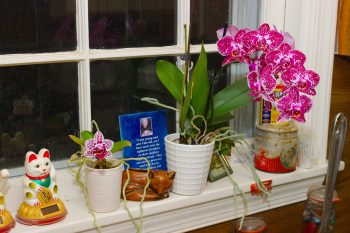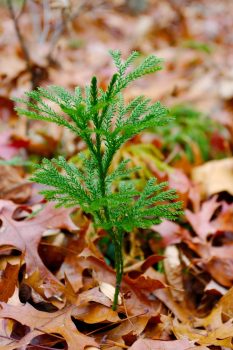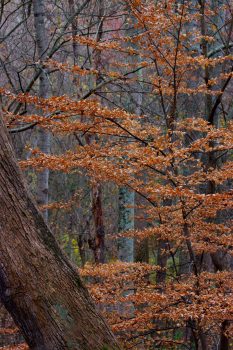We walked from Woodlawn Manor to Sandy Spring and back today. It was a lovely day and I had some hopes of seeing birds, although I didn’t bring my long lens. We did see a few, but not many. The sun was out and the sky was blue and it was lovely, anyway. When were were going around the field near the spring, I saw these rose hips, probably from Rosa multiflora, which is quite an invasive weed, but still a pretty thing in its place. It was brought in as both root stock for hybrid roses and to be planted on highways, because it will generally stop out of control cars with less risk to the passengers than a metal, stone, or concrete barrier.
Flowers and Plants
Abutilon ‘Biltmore Ballgown’
We went to Brookside Gardens this afternoon. There wasn’t a lot in bloom outdoors but even so, it’s a nice place to walk on a early autumn afternoon, especially on as nice a day as today. Before that walk, as usual, we went into the conservatory.
This plant, labeled Abutilon, also called flowering maple, is a variety called ‘Biltmore Ballgown’ and is quite pretty. The flowering maples have recently been reclassified in the the genus Callianthe, however.
Sunflower
Having retired as of Tuesday, weekdays have become like weekends. Dorothy and Jeff were coming down this morning and I had agreed to meet them at Rocklands Farm where Dorothy was going to paint some signs for Anna. I got there a few minutes before they did and I wandered into Anna’s flower beds to take a few pictures.
There were some sunflowers which, against a deep blue sky, were quite beautiful. I’ve had times where the sky was so bright that I couldn’t combine the color of the sky with that of the flowers but today they balanced quite well and I am pleased with the colors in this photo.
Croyden Creek Woods
Cathy and I went to Croyden Creek and walked the large loop today. This starts at the Nature Center and then goes on a trail into the woods to the right (east) of Avery Road down to the top of some rocks overlooking Croyden Creek. We crossed the creek and walked the trail down towards Rock Creek. Before it reaches Rock Creek, though, it climbs up the ridge and circles back towards Norbeck Road. Eventually it meets the sunken roadbed of the former Avery Road. Just across from there are the foundations of an old house. We continued on the trail past that, which leads down towards the creek and crosses it, coming out onto the lawn at the northwest corner of the Glenview Mansion property. Then back along that and into the woods again and up to the nature center. It’s a nice walk and we like it well enough (except we did see a copperhead snake there last year, so Cathy is always on the lookout).
Sometimes we see quite a few birds but this time not many at all. I took a handful of photos and in particular like this one of the bright August sun on the greens and browns of the woods with the intense blue sky showing through.
Ferns
We walked a 32⁄3 mile loop today at the Patuxent River State Park, just upstream from Triadelphia Reservoir. We started at the parking area on Georgia Avenue (MD 97) where it crosses the Patuxent River, taking the trail closest to the river (the ‘Yellow’ trail) almost to Howard Chapel Road. The trail then loops to the south and west and we turned onto the ‘Red’ trail, crossing Howard Chapel Road, looping around and then returning to Howard Chapel Road near the Howard Chapel Cemetery. On the way back through the woods I took the only photo taken on the walk, of these ferns.
Rachel Carson Conservation Park
We went to the Rachel Carson Conservation Park today and had a fairly hot and humid walk through the woods. We heard quite a few birds in the woods but saw almost none. We did see these Indian pipe (Monotropa uniflora), also known as ghost plant or ghost pipe. These are parasitic, non-photosynthesizing plants, getting their energy from Russulaceae family of fungi, which in turn get their energy from the roots of photosynthesizing plants. We also saw chanterelle mushrooms (Cantharellus species) and downy rattlesnake plantain (Goodyera pubescens).
Towards the end of our walk we were in the meadows nearer the parking area and I got some photos of the dreaded spotted lanternfly (Lycorma delicatula) in its final nymphal instar stage. There were also indigo buntings (Passerina cyanea) singing all around and I finally found one that I could just see at the top of a tree and got a few photos of that.
National Arboretum Rose Garden
We decided to take a break from dealing with things and drove to the National Arboretum today. There were a few early roses that were still blooming but this is pretty close to the same date we’ve gone the last two years. Nevertheless, it was a really nice visit and we enjoyed the flowers very much. It wasn’t nearly so crowded as it was earlier in the year when we went on Sunday and the cherry blossoms were in bloom. We had come for the camellias rather than the cherries.
Akebia quinata
Years ago my dad planted both three- and five-leaved akebia at the land in Pennsylvania. I haven’t found any of the three-leaved type but there is some five-leaved Akebia quinata, also known as chocolate vine. Although it is listed as a noxious weed in some states, and while it’s managed to survive without any care here, it hasn’t spread in a way that’s concerning, especially when compared to the hardy kiwi that’s nearby. I love the leaves, as shown here. It has interesting, purple flowers and one of the more unique fruits I’ve seen. From the Missouri Botanic Garden’s Plant Finder, “Flowers give way to sausage-shaped, violet fruit pods (to 4” long) which split open in fall to reveal small black seeds imbedded in a whitish pulp. The whitish pulp is edible.”
Marsh Grass, Blackwater National Wildlife Refuge
We returned home from Delaware today. We decided that we’d stop at Blackwater National Wildlife Refuge, going first to the visitor center and then went to the short boardwalk at the end of Observation Access Road. The Marsh Edge Trail was closed because there is an active bald eagle’s nest near that trail. We could see the nest from the boardwalk but didn’t see any activity. We did see ospreys on their nests in a few different places and another eagle nest at the western end of the drive. This photo was taken from the boardwalk and I like the patterns of grass and water.
Cathy with ‘Red Candles’ Camellia
For the last few years we’ve gone to the U. S. National Arboretum during rose season, trying to catch some of the earlier, species roses. This year we decided to try our luck at getting there during the Camellia season, which for spring blooming Camellia japonica is early spring. Because that coincides with cherry blossoms, the Arboretum was quite busy. We drove past the cherry blossoms, though, and started in Fern Valley. There used to be a huge variety of daffodils planted there, but those are almost entirely gone now. It’s a little early for most things in Fern Valley but we did see some spreading Jacob’s-ladder (or Greek Valerian, Polemonium reptans), golden ragwort (or golden groundsel, Packera aurea), cutleaf toothwort (Cardamine concatenata), spring beauties (Claytonia virginica), bloodroot (Sanguinaria canadensis), and quite a few trout lilies (Erythronium americanum).
From there we moved on to the Asian collection, which is where the Camellias are grown. I did a pretty good job of recording the names of the flowers I photographed and picked a few that I might consider adding to our garden. The photo here is the only one I took of Cathy with the Camellias and it’s called ‘Red Candles’, a very nice, vigorously flowering C. japonica.
Camellia japonica ‘Hokkaido Red’
Of the camellias in our yard, this one is among the most successful. It’s a fairly slow growing shrub, so it will be a while before it’s really visible in it’s location behind the azaleas in front of our house. Nevertheless, from our front porch it’s quite visible and has a lot of flowers on it. Another called ‘April Rose’ that I planted at the same time, however, is barely holding on to life. I haven’t given up on it yet, but it isn’t encouraging. The oldest camellia I have, called ‘Pink Perfection’, is finally to the point where I’m not worried about it surviving. It’s almost five feet tall and doing well.
Sanguinaria canadensis (Bloodroot)
We had a load of things in the van to go to the dump today and thought we might also make a quick stop at the thrift store to drop some things off there. We decided, though, that we didn’t really have enough for the thrift store but we had left too early to go straight to church. So, we stopped for short visit to the Montgomery County Agricultural History Farm Park. There were things in bloom in the shade garden, which we always enjoy. These are bloodroot (Sanguinaria canadensis) buds and leaves coming up. It’s one of my favorite native plants and a wonderful sign of spring.
Other things blooming included the Pieris japonica (Japanese andromeda) and of course there were daffodils. The Eranthis hyemalis (winter aconite) was done blooming. In the larger demonstration garden there was a little activity but nothing anywhere near blooming yet. Once we have a few warm days, though, that will change.
Snow Drops (Galanthus nivalis)
Cathy and I took a walk at lunch time today, going about half way around the block that our office is on. There’s a cut through to the parking lot of my building from the back, which is how we got back. We walked through some of the empty lot next to my building but didn’t see much in the way of bird life. That building lot has been empty and waiting to be built on since before Dorothy was born (and before I worked there), so, a long time. In the current market, I don’t see that changing any time soon. On a lighter note, the snow drops (Galanthus nivalis) are blooming.
Hamamelis (Witch Hazel)
After a fairly long visit with Cathy’s mom today, we went to the Agricultural Farm Park. Gardens in winter are not always great destinations but if you know where to look you can sometimes find something worth seeing. I’m a big fan of witch hazel, including any of the five Hamamelis species, as well as the hybrid Hamamelis × intermedia, a cross between H. japonica and H. mollis. H. virginiana blooms in the fall while the others all bloom in the late winter and early spring, which is particularly nice. The flowers aren’t large but they are often very abundant and their colors range from yellow, through orange to a rusty red. This one, growing in the park’s demonstration garden, doesn’t lose its leaves in the fall, which turn brown but hang on until spring, so the flowers are even less conspicuous.
U.S. Botanic Garden
Cathy suggested we go to the U.S. Botanic Garden today after church. It’s a place I enjoy and I thought it was a really good idea, so, we went. The last time we were there was in July of 2016. In the summer, of course, the outside garden is nice, too, but today it was all about being indoors. The large, central portion of the garden is great, with room for very large plants and trees, but I think the orchid and fern rooms are especially nice. There were only a few orchids in bloom but the maidenhair (Adiantum) and bird’s next (Asplenium) ferns as well as other moisture loving plants made that room nice. The fern room with it’s tree ferns and a few large tassel-ferns (which are actually clubmosses), is also very pretty.
I brought a sketch pad with me, along with a few pencils, thinking I might sit and sketch a little, but in the end, we didn’t sit much and I didn’t do anything but take photos. I think I’m intimidated by a blank page at this point, but at least I carried the sketch book with me. Maybe on the next outing I’ll actually sit and open it up.
Brookside Gardens
After driving down to Kensington to visit a friend briefly and drop off a couple Christmas presents we went to Brookside Gardens, a 50-acre public display garden within Wheaton Regional Park. It’s wonderful all year, of course, but we particularly like going there in the winter, because they have a greenhouse (or conservatory) that’s lush and green all year. One part of that has always been dedicated to flowering plants that are rotated throughout the year, although sadly they are no longer going to be doing that (because ‘sustainability’ which I suspect really means ‘budget cuts’). The permanent installation is nice, of course, but it was always a treat to see what was different, as well. There are two connected greenhouses and the second one had two very large model railroad displays set up (which will be there until January 6, I believe).
After spending time in both greenhouses the rain had stopped so we walked around the grounds as well, walking around the pond and onto the island with the Japanese pavilion, shown in the second photograph.
Phalaenopsis Orchids
In the 21⁄2 years Cathy’s mom has been in assisted living, she’s been given quite a few flowers including two small, Phalaenopsis orchid plants which were in bloom when she got them. She was able to enjoy them and when they stopped blooming we brought them home and I’ve been keeping them on our kitchen windowsill. Recently both of them came back into bloom at the same time (the second time for one of them and the first for the other). I took the first to start blooming to her but then she was in the hospital for a little while and I brought it back home. They are now gracing our kitchen window with lovely blooms. I don’t remember who gave them to Margaret but I’m thankful for them every time I’m at the kitchen sink.
Dendrolycopodium dendroideum (Tree Groundpine)
We drove out to Annapolis Rock Road today and walked on a series of trails there, part of the Patuxent River State Park. We thought that the trails would overlook the Patuxent River and according to some maps I’ve found, some of them do, but not those that we walked. It’s quite a maze of trails, actually, and since it’s almost all in the woods, it’s not easy to keep a sense of direction.
A few times we came across patches of tree groundpine, (Dendrolycopodium dendroideum), a native clubmoss. It’s a surprisingly green sight this time of year, and very pretty. Other than that, there wasn’t really all that much to photograph. Although we got to these trails on Annapolis Rock Road, this is not the Annapolis Rock off of the Appalachian Trail near Interstate 70 and US 40 about halfway between Frederick and Hagerstown. That’s a place we really should go at some point, but today was not that day.
Beech Leaves
After visiting Cathy’s mom this afternoon we drove to Woodlawn Manor and walked to Sandy Spring and back. I carried my camera, as I nearly always do, but only took a few photos. It was late in the day, overcast, and fairly dark. Even if I had seen birds, I don’t think there would have been enough light to get a good photo in the woods. I took a few pitures of horses before we went into the woods but they aren’t very good. I considered not posing any picture from today. I’m not bound to post a picture for every day as I was from 2011 through 2020, but I still try to post a picture from the days where I take any. I do make exceptions when the only pictures I take are not for sharing for some reason. But in general, if I took one or more pictures, I’ll post one.
I love beech trees this time of year. Our woods have quite a few American beech (Fagus grandifolia) and of course we also see the European or common beech (Fagus sylvatica) especially in yards, parks, and gardens. Most of the varieties available in nurseries are F. sylvatica. One that I love in the spring is the tri-colour beech, F. sylvatica ‘Roseomarginata’. There is one at Asbury Methodist Village and in the spring it’s a vivid scarlet. Its leaves can’t really take our summer sun, though, so it’s not really an ideal tree for our climate.
Japanese Forest Grass, &tc.
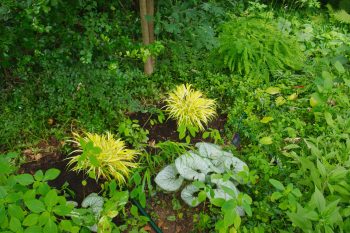
Japanese Forest Grass (Hakonechloa macra), Siberian Bugloss (Brunnera macrophylla), and Northern Maidenhair Fern (Adiantum pedatum)
At the north end of our yard there is a relatively shady area, partially under a cherry tree. Cathy planted the two Japanese forest grass plants (Hakonechloa macra) you can see here. They are the chartreuse tufts in the center and lower left of the photo. The silvery, heart-shaped leaves are Siberian bugloss (Brunnera macrophylla), also known as great forget-me-not (but not the same as Myosotis species). In the upper right of the photo is a northern maidenhair fern (Adiantum pedatum) that originally came from my father’s garden and which I divided a couple years ago and planted in various places around the yard. The base of the small tree in the top center of the photo is one of two fastigiate English oaks (Quercus robur) I planted about ten years ago.


